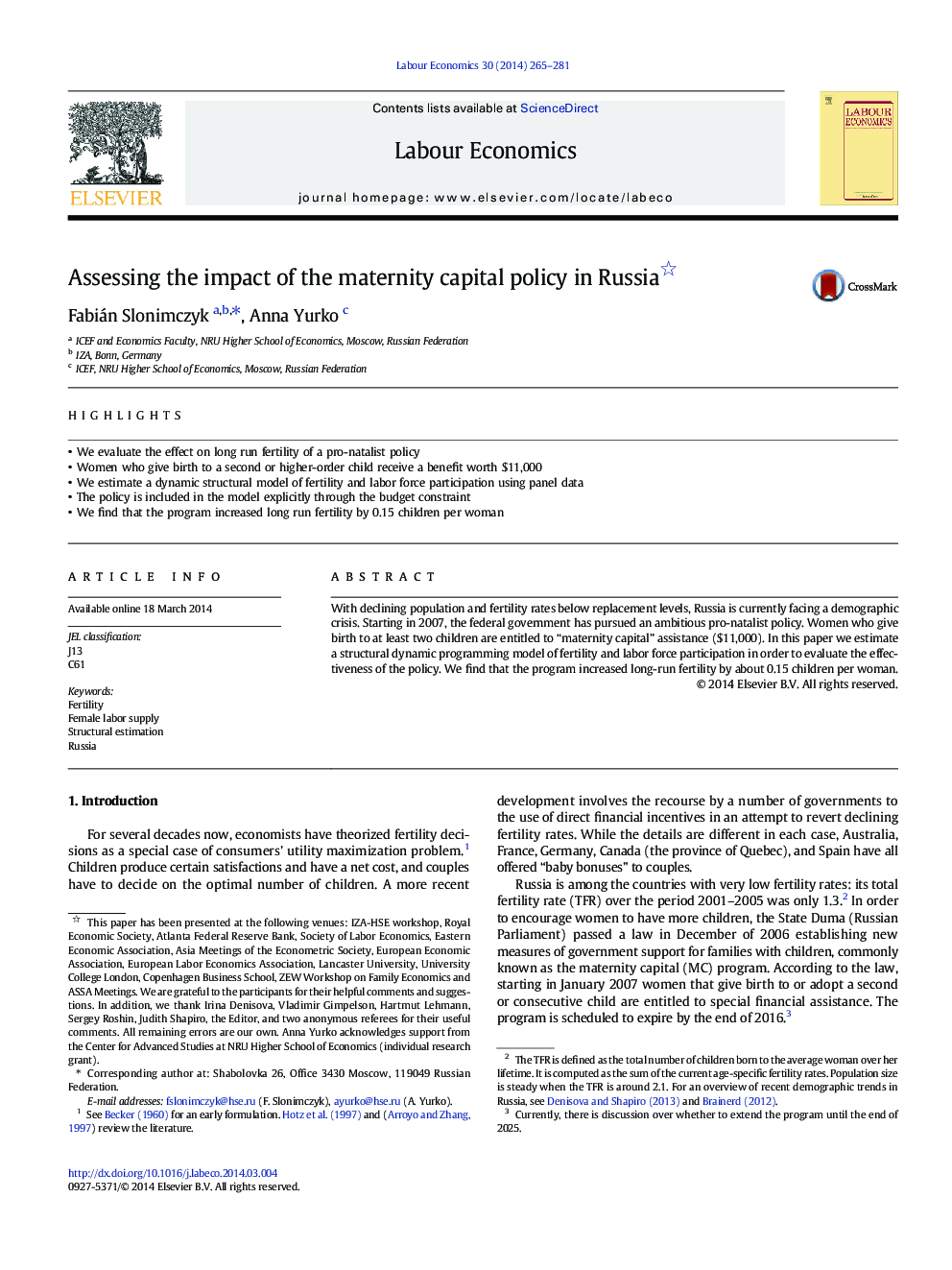| Article ID | Journal | Published Year | Pages | File Type |
|---|---|---|---|---|
| 972372 | Labour Economics | 2014 | 17 Pages |
•We evaluate the effect on long run fertility of a pro-natalist policy•Women who give birth to a second or higher-order child receive a benefit worth $11,000•We estimate a dynamic structural model of fertility and labor force participation using panel data•The policy is included in the model explicitly through the budget constraint•We find that the program increased long run fertility by 0.15 children per woman
With declining population and fertility rates below replacement levels, Russia is currently facing a demographic crisis. Starting in 2007, the federal government has pursued an ambitious pro-natalist policy. Women who give birth to at least two children are entitled to “maternity capital” assistance ($11,000). In this paper we estimate a structural dynamic programming model of fertility and labor force participation in order to evaluate the effectiveness of the policy. We find that the program increased long-run fertility by about 0.15 children per woman.
